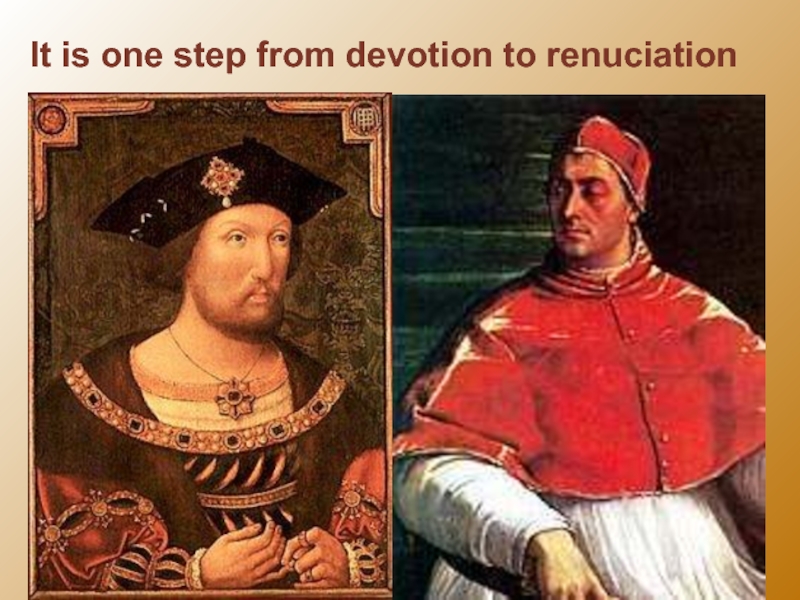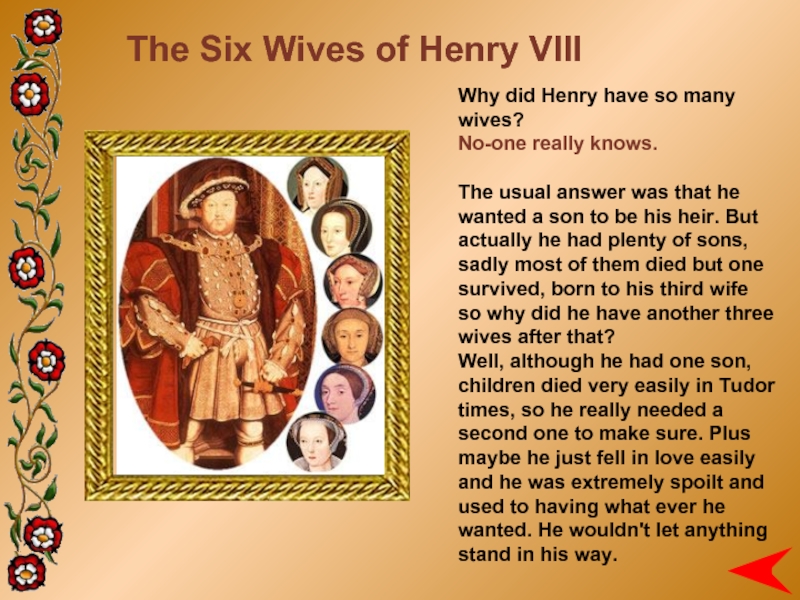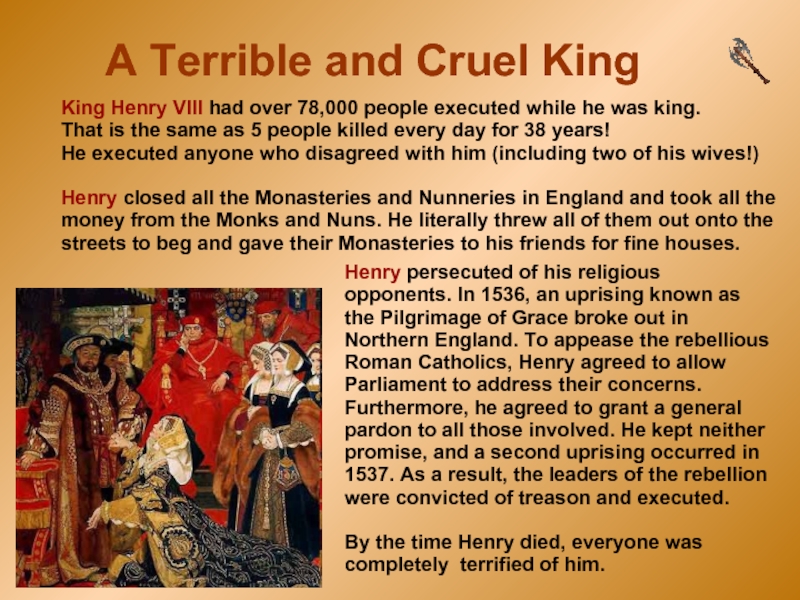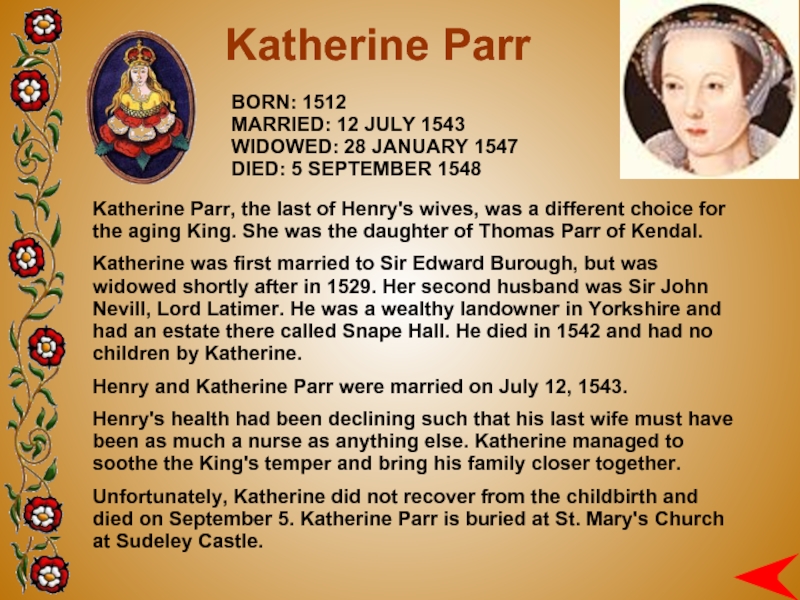fates of Henry's wives is:
"divorced, beheaded, died,
divorced, beheaded, survived".
An alternative version is
"King Henry the Eighth,
to six wives he was wedded:
One died, one survived,
two divorced, two beheaded".
The doggerel, however, may be
misleading.
Firstly, Henry was never divorced from
any of his wives; rather, his marriages to
them were annulled. Secondly, four
marriages - not two - ended in
annulments.
The marriages to Anne Boleyn and
Catherine Howard were annulled shortly
before their executions.
Bluebeard is the title character in a famous fairy tale about a violent
nobleman and his over-curious wife.
It was written by Charles Perrault and first published in 1697.
















































